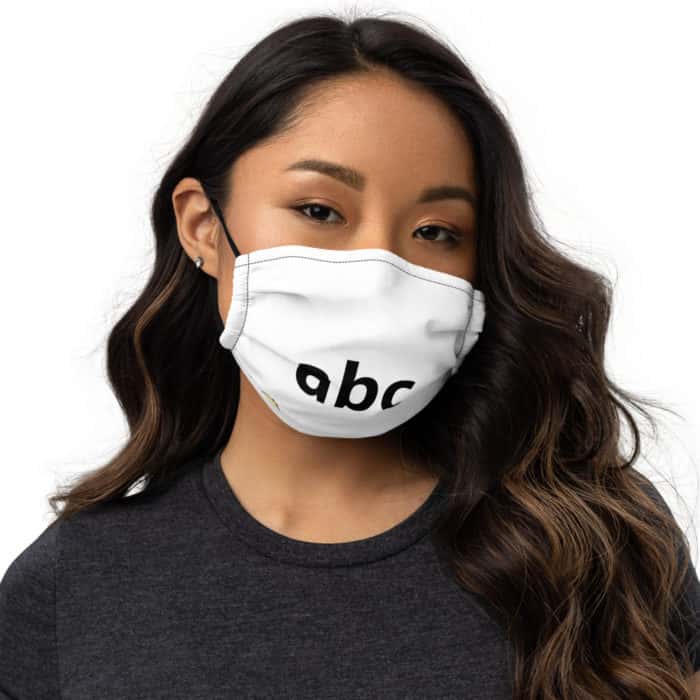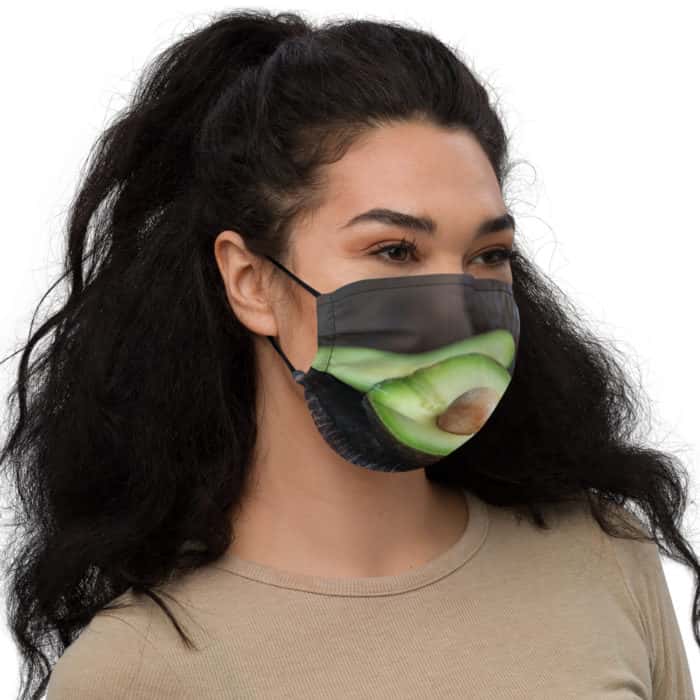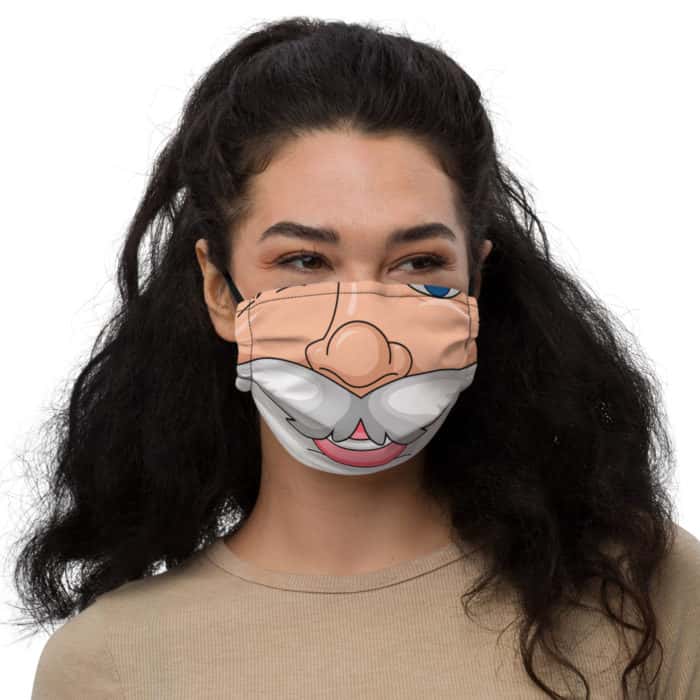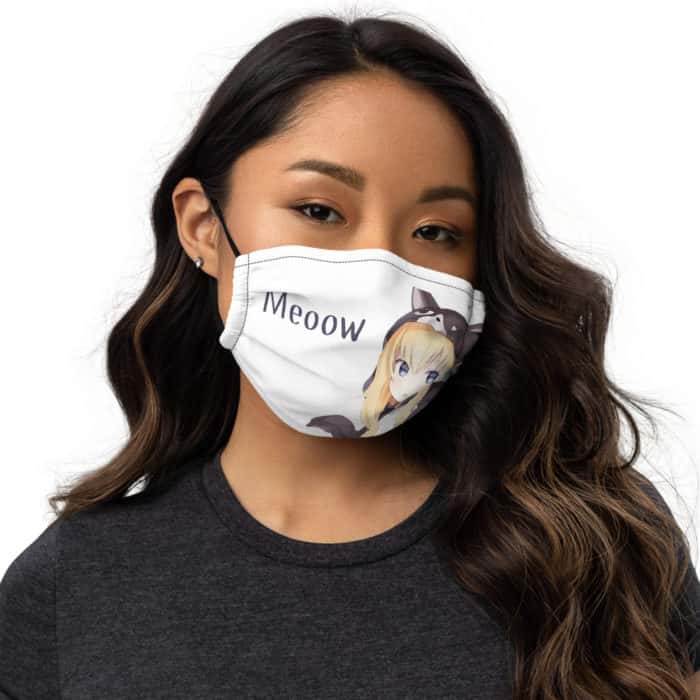In the quest for more sustainable and ethical fashion choices, an alternative to fast fashion has emerged. This alternative presents a refreshing approach that prioritizes quality, durability, and conscious consumption. By embracing this shift, individuals can make a positive impact on the environment and support a more responsible and socially-conscious fashion industry.
What is fast fashion and why has it gained popularity in recent years?
Definition of Fast Fashion
Fast fashion refers to the rapid production and consumption of inexpensive, trendy clothing. It involves quickly producing new collections inspired by runway designs and celebrity styles, which are then manufactured at a low cost and sold at affordable prices. Fast fashion brands prioritize speed and accessibility, allowing consumers to stay up-to-date with the latest trends without breaking the bank.
The Popularity of Fast Fashion
Fast fashion has gained popularity in recent years due to several factors:
1. Affordability: One of the main appeals of fast fashion is its low price point. Consumers can purchase trendy clothing items at a fraction of the cost compared to high-end designer brands.
2. Accessibility: Fast fashion brands have expanded their reach through online shopping platforms, making it easier for consumers around the world to access their products.
3. Variety: Fast fashion brands constantly release new collections, offering a wide range of styles and options for consumers to choose from.
4. Social Media Influence: The rise of social media platforms like Instagram has fueled the desire for constant newness in fashion. People want to showcase their outfits online and feel pressured to keep up with the latest trends.
5. Disposable Culture: In today’s society, there is an emphasis on instant gratification and disposable consumerism. Fast fashion caters to this mindset by providing cheap, disposable clothing that can be easily discarded after a few wears.
While fast fashion may seem appealing on the surface, it is important to consider its negative impact on both the environment and labor rights.
How does fast fashion contribute to environmental degradation?
Fast fashion contributes to environmental degradation in several ways. Firstly, the production of fast fashion garments often involves the use of synthetic materials such as polyester, which is derived from non-renewable resources like petroleum. The extraction and processing of these resources contribute to air and water pollution, as well as greenhouse gas emissions. Additionally, the dyeing and finishing processes used in fast fashion production release toxic chemicals into waterways, harming aquatic ecosystems.
Furthermore, fast fashion promotes a culture of disposability, where clothing is designed to be worn only a few times before being discarded. This leads to an enormous amount of textile waste that ends up in landfills, where it takes decades or even centuries to decompose. The production and disposal of clothing also require significant amounts of energy and water, further exacerbating environmental issues.
Impact on Biodiversity
The environmental degradation caused by fast fashion has a significant impact on biodiversity. Chemical pollutants from textile dyeing and finishing processes contaminate rivers and oceans, leading to the destruction of aquatic habitats and threatening marine life. Moreover, deforestation occurs when land is cleared for cotton cultivation or for raising livestock used in leather production.
Solutions:
To address the environmental impact of fast fashion, there are several steps that can be taken. One approach is promoting sustainable materials such as organic cotton or recycled fibers that have a lower ecological footprint compared to conventional materials. Another solution is encouraging consumers to buy fewer but higher-quality garments that are designed to last longer.
Additionally, implementing stricter regulations on textile manufacturing practices can help reduce pollution levels. Governments can also incentivize brands to adopt more sustainable practices through tax breaks or subsidies. Finally, educating consumers about the importance of conscious consumption and providing information about eco-friendly alternatives can encourage more sustainable choices.
Overall, reducing the environmental degradation caused by fast fashion requires a collective effort from both the fashion industry and consumers.
Sources:
– Environmental Justice Foundation. (n.d.). The True Cost of Fashion. Retrieved from https://ejfoundation.org/reports/the-true-cost-of-fashion
– Fletcher, K. (2014). Sustainable Fashion and Textiles: Design Journeys. Routledge.
What are the social implications of fast fashion, particularly in terms of labor rights and exploitation?
Fast fashion’s business model heavily relies on low production costs, which often leads to labor rights violations and exploitation within the supply chain. Many fast fashion brands outsource their production to countries with lower labor costs, where workers may face unsafe working conditions, long hours, low wages, and lack of job security.
Exploitation of Garment Workers
In countries like Bangladesh and Cambodia, where a significant portion of fast fashion garments are produced, workers endure harsh conditions in sweatshops. These factories often fail to provide proper safety measures, leading to accidents such as building collapses or fires that have resulted in numerous fatalities. Additionally, workers are frequently subjected to verbal abuse and physical violence by supervisors.
Child Labor
Another social implication of fast fashion is the prevalence of child labor in garment production. Due to the demand for cheap labor, children as young as 10 years old are often forced to work long hours under hazardous conditions instead of attending school. This not only deprives them of education but also exposes them to various health risks.
Solutions:
To address these social implications, it is crucial for brands to take responsibility for their supply chains by ensuring fair wages and safe working conditions for all employees involved in the production process. This can be achieved through regular audits conducted by independent third parties to monitor compliance with labor standards.
Consumers can also play a role by supporting brands that prioritize ethical manufacturing practices. By choosing to purchase from companies that are transparent about their supply chains and actively work towards fair labor practices, consumers can contribute to the demand for more ethical fashion.
Furthermore, international organizations and governments can enforce stricter regulations and penalties for brands that engage in labor rights violations. This includes implementing laws against child labor, providing support for worker unions, and promoting international agreements that protect workers’ rights globally.
Sources:
– Clean Clothes Campaign. (n.d.). Labour Rights in the Fashion Industry. Retrieved from https://cleanclothes.org/issues/labour-rights
– Oxfam Australia. (2018). Made in Poverty: The True Price of Fashion. Retrieved from https://www.oxfam.org.au/wp-content/uploads/2018/10/OA_MadeInPoverty_TheTruePriceOfFashion_Web.pdf
Are there any ethical alternatives to fast fashion?
In recent years, the demand for ethical alternatives to fast fashion has grown significantly. Consumers are becoming more aware of the negative impacts of the fast fashion industry on the environment and workers’ rights. As a result, several ethical alternatives have emerged.
Fair Trade Clothing
Fair trade clothing ensures that workers involved in the production process receive fair wages and work in safe conditions. These brands often have certifications from organizations such as Fairtrade International or the World Fair Trade Organization (WFTO). Some popular fair trade clothing brands include People Tree, Patagonia, and Eileen Fisher.
Upcycled Fashion
Upcycled fashion involves transforming pre-existing materials or garments into new pieces. This reduces waste and promotes sustainability. Brands like Reformation and tonlé are known for their upcycled fashion collections.
Slow Fashion Brands
Slow fashion is a movement that encourages consumers to buy less but better quality clothing. It focuses on sustainable practices, fair wages, and transparency in the supply chain. Slow fashion brands often prioritize using organic or recycled materials and producing smaller quantities to avoid overproduction. Examples of slow fashion brands include Everlane, Amour Vert, and Nudie Jeans.
By choosing these ethical alternatives to fast fashion, consumers can support companies that prioritize sustainability and workers’ rights while still enjoying fashionable clothing options.
How does slow fashion differ from fast fashion, and what principles does it promote?
Slow fashion stands in stark contrast to the fast fashion model that dominates today’s industry. While fast fashion promotes quick turnover of trends at low prices, slow fashion emphasizes quality over quantity and embraces sustainable practices.
One of the main principles of slow fashion is valuing quality over quantity. Slow fashion brands focus on creating garments that are made to last, using durable materials and craftsmanship. This approach encourages consumers to invest in timeless pieces that can be worn for years, rather than constantly buying cheaply made, disposable clothing.
Sustainable Practices
Slow fashion promotes sustainability by considering the environmental impact of every aspect of the production process. This includes using organic or recycled materials, minimizing waste through upcycling or recycling initiatives, and reducing carbon emissions. Slow fashion brands often prioritize transparency in their supply chain to ensure ethical sourcing and fair labor practices.
Another principle of slow fashion is supporting local production. By manufacturing garments locally, brands can reduce their carbon footprint and support local economies. Local production also allows for better oversight of working conditions and ensures fair wages for workers.
Overall, slow fashion aims to create a more sustainable and ethical fashion industry by challenging the fast-paced consumer culture and promoting mindful consumption.
Can you provide examples of sustainable materials used in slow fashion?
Sustainable materials play a crucial role in the slow fashion movement as they help reduce the environmental impact of clothing production. Here are some examples of sustainable materials commonly used in slow fashion:
Organic Cotton
Organic cotton is grown without the use of synthetic pesticides or fertilizers, making it less harmful to the environment. It also promotes biodiversity by avoiding genetically modified seeds. Brands like People Tree and Patagonia often use organic cotton in their collections.
Hemp
Hemp is a versatile and sustainable material that requires fewer resources compared to conventional crops like cotton. It grows quickly without the need for pesticides or excessive water usage. Hemp fiber can be transformed into durable fabrics suitable for various types of clothing.
Tencel (Lyocell)
Tencel is a type of fabric made from wood pulp sourced from sustainably managed forests. The production process of Tencel uses a closed-loop system, where the solvents used are recycled, minimizing waste. It is known for its softness and breathability and is often used by brands like Amour Vert and Reformation.
Recycled Polyester
Recycled polyester is made from post-consumer plastic bottles or other polyester waste. It helps reduce the demand for virgin polyester production, which has a high carbon footprint. Brands like Patagonia and Everlane incorporate recycled polyester into their collections to promote circularity in fashion.
These sustainable materials not only help minimize the environmental impact of clothing production but also offer durability and versatility in slow fashion garments.
What are some key characteristics of sustainable brands that offer alternatives to fast fashion?
Sustainable brands that offer alternatives to fast fashion share several key characteristics that set them apart from traditional fast fashion retailers. These characteristics include:
Transparency
Sustainable brands prioritize transparency throughout their supply chain. They provide information about where their materials come from, how their products are made, and the working conditions of their employees. This transparency allows consumers to make informed choices about the brands they support.
Ethical Production
Sustainable brands ensure ethical production practices by paying fair wages to workers, providing safe working conditions, and adhering to labor laws. They often work with factories or artisans that follow ethical standards and have certifications such as Fair Trade or GOTS (Global Organic Textile Standard).
Sustainable Materials
These brands prioritize using sustainable materials such as organic cotton, hemp, or recycled fibers in their products. By choosing these materials, they reduce the environmental impact of clothing production and promote circularity within the industry.
Sustainable brands aim to minimize waste throughout their production processes. They may upcycle or recycle materials, use cutting techniques that maximize fabric efficiency, or repurpose leftover fabrics into new products. By reducing waste, they contribute to a more sustainable fashion industry.
Many sustainable brands actively engage with their communities and support social or environmental initiatives. This can include partnering with local organizations, donating a portion of their profits to charitable causes, or organizing events to raise awareness about sustainability.
These key characteristics distinguish sustainable brands from fast fashion retailers by prioritizing transparency, ethical production, sustainable materials, minimal waste, and community engagement.
How do these alternative brands ensure fair wages and safe working conditions for their employees?
Collaboration with Fair Trade Organizations
Many alternative clothing brands prioritize fair wages and safe working conditions by collaborating with Fair Trade organizations. These organizations set standards for ethical labor practices and conduct regular audits to ensure compliance. By partnering with Fair Trade organizations, these brands can guarantee that their employees are paid fair wages, work in safe environments, and receive other benefits such as healthcare and education.
Transparent Supply Chains
Another way alternative brands ensure fair wages and safe working conditions is by maintaining transparent supply chains. They trace the entire production process from raw materials to finished products, making it easier to identify any potential exploitation or unethical practices. By disclosing this information to consumers, these brands hold themselves accountable and allow customers to make informed choices about the products they purchase.
Investment in Training and Education
To further support fair wages and safe working conditions, alternative brands often invest in training and education programs for their employees. This ensures that workers have the necessary skills to perform their jobs effectively while also providing opportunities for personal growth and advancement within the company. By investing in their workforce, these brands create a positive work environment that values employee well-being.
List of alternative brand initiatives:
– Collaborating with Fair Trade organizations
– Maintaining transparent supply chains
– Investing in training and education programs
By implementing these measures, alternative clothing brands prioritize fair wages and safe working conditions for their employees while also promoting transparency and accountability within the fashion industry.
Are there any certifications or labels that consumers can look for when shopping for sustainable clothing?
GOTS Certification (Global Organic Textile Standard)
The GOTS certification guarantees that a garment is made from organic fibers grown without the use of harmful chemicals. It also ensures that the entire production process, including dyeing and printing, meets strict environmental and social criteria. Consumers can look for the GOTS label to ensure they are purchasing sustainable clothing that respects both people and the planet.
OEKO-TEX Standard 100
The OEKO-TEX Standard 100 certification ensures that textile products are free from harmful substances. This label guarantees that the garment has been tested for various chemicals and is safe for human use. It provides consumers with confidence that their clothing choices are not contributing to environmental pollution or harming workers in the production process.
B Corp Certification
While not specific to clothing, B Corp certification identifies companies that meet high standards of social and environmental performance, transparency, and accountability. When consumers see the B Corp logo on a brand’s website or product packaging, they can trust that the company is committed to sustainability across all aspects of its operations.
List of certifications and labels:
– GOTS Certification
– OEKO-TEX Standard 100
– B Corp Certification
By looking for these certifications and labels when shopping for sustainable clothing, consumers can make more informed choices and support brands that prioritize ethical practices.
How can consumers support the slow fashion movement without breaking the bank?
Invest in Timeless Pieces
One way consumers can support the slow fashion movement without breaking the bank is by investing in timeless pieces rather than following short-lived trends. Classic designs like a well-fitted blazer or a little black dress can be worn for years without going out of style. By choosing versatile items, consumers can build a wardrobe that withstands changing fashion seasons while reducing their overall consumption.
Shop Secondhand
Another affordable way to support slow fashion is by shopping secondhand. Thrift stores, consignment shops, and online platforms like Depop and Poshmark offer a wide range of gently used clothing at significantly lower prices than buying new. By giving pre-loved items a second life, consumers reduce waste and support a more sustainable fashion industry.
Learn Basic Sewing Skills
Learning basic sewing skills can also help consumers extend the lifespan of their clothing and avoid the need for frequent replacements. Simple alterations like hemming pants or replacing buttons can be easily done at home, saving money and reducing waste. Additionally, understanding how to mend small tears or holes can give garments a new lease on life.
List of affordable ways to support slow fashion:
– Invest in timeless pieces
– Shop secondhand
– Learn basic sewing skills
By implementing these strategies, consumers can actively participate in the slow fashion movement without straining their budgets while promoting sustainability and reducing their environmental impact.
What role do thrift stores and secondhand clothing play in providing an alternative to fast fashion?
Reducing Clothing Waste
Thrift stores and secondhand clothing play a crucial role in reducing clothing waste. By offering an outlet for people to donate unwanted garments, these stores prevent them from ending up in landfills. Instead, they provide an opportunity for others to find unique pieces at affordable prices, extending the lifespan of clothing items and reducing overall consumption.
Promoting Circular Economy
Thrift stores and secondhand clothing contribute to the promotion of a circular economy within the fashion industry. Rather than following a linear model where clothes are produced, consumed, and discarded, these establishments enable garments to circulate among different owners. This reduces the demand for new production while still satisfying consumer needs for style and variety.
Supporting Local Communities
Thrift stores often operate as nonprofit organizations or support local charities. The revenue generated from selling secondhand clothing is often reinvested in community programs, such as job training initiatives or providing assistance to vulnerable populations. By shopping at thrift stores, consumers not only contribute to sustainable fashion practices but also support their local communities.
List of roles played by thrift stores and secondhand clothing:
– Reducing clothing waste
– Promoting a circular economy
– Supporting local communities
By recognizing the important role thrift stores and secondhand clothing play, consumers can actively participate in reducing the environmental impact of fast fashion while also supporting social causes within their communities.
Is it possible to be fashionable while embracing sustainable practices?
Embracing Individual Style
Being fashionable while embracing sustainable practices is absolutely possible. Sustainable fashion encourages individuals to embrace their own unique style rather than following fleeting trends dictated by the fast fashion industry. By focusing on personal expression and investing in high-quality pieces that align with individual tastes, one can create a stylish wardrobe that stands the test of time.
Choosing Ethical Brands
Many ethical and sustainable brands prioritize design and aesthetics alongside their commitment to sustainability. These brands offer fashionable options that are made with eco-friendly materials, innovative techniques, and attention to detail. By consciously choosing these brands, consumers can support sustainable practices without compromising on style.
Exploring Vintage and Retro Fashion
Vintage and retro fashion has gained popularity in recent years as a way to be both fashionable and sustainable. Shopping for vintage pieces allows individuals to find unique items with historical value while reducing the demand for new production. Additionally, incorporating vintage elements into modern outfits adds a touch of individuality and creates a distinctive fashion statement.
List of ways to be fashionable while embracing sustainable practices:
– Embrace individual style
– Choose ethical brands
– Explore vintage and retro fashion
By adopting these approaches, individuals can demonstrate that sustainability and fashion can coexist, proving that being stylish does not have to come at the expense of the environment or ethical considerations.
How can we encourage more designers and big brands to adopt sustainable practices in their production processes?
Raising Consumer Awareness
One way to encourage designers and big brands to adopt sustainable practices is by raising consumer awareness about the environmental and social impacts of fast fashion. By educating consumers about the benefits of sustainable fashion and the negative consequences of unethical production processes, they can make more informed choices and demand change from brands that prioritize profit over sustainability.
Supporting Ethical Brands
Consumers have significant power in shaping the market. By actively supporting ethical brands that prioritize sustainability, consumers send a clear message to the industry that there is demand for responsible fashion. Increased sales and positive consumer feedback can incentivize other designers and big brands to reconsider their production processes and embrace more sustainable practices.
Advocating for Policy Changes
Advocacy plays a crucial role in encouraging systemic change within the fashion industry. Consumers can join forces with organizations advocating for policy changes that promote sustainability, such as stricter regulations on waste management or incentives for adopting eco-friendly materials. By pressuring governments and policymakers, individuals can contribute to creating an environment where sustainable practices become the norm rather than the exception.
List of ways to encourage designers and big brands:
– Raise consumer awareness
– Support ethical brands
– Advocate for policy changes
By combining these efforts, individuals can help shift the industry towards greater sustainability by influencing both consumer behavior and systemic changes within the fashion sector.
Are there any government policies or regulations in place to promote sustainability within the fashion industry?
The Fashion Revolution’s Fashion Revolution Week
Fashion Revolution Week is an annual event that aims to raise awareness about the environmental and social impacts of the fashion industry. It encourages consumers to question brands about their supply chains, promotes transparency, and advocates for a more sustainable fashion system. This event serves as a reminder to governments and brands alike that sustainability should be a priority.
The European Union’s Circular Economy Action Plan
The European Union has implemented various policies and initiatives to promote sustainability within the fashion industry. The Circular Economy Action Plan, for example, sets targets for reducing waste and increasing recycling rates. It encourages brands to adopt circular business models that prioritize resource efficiency and minimize environmental impact.
California’s Transparency in Supply Chains Act
California’s Transparency in Supply Chains Act requires certain companies doing business in California to disclose their efforts to eradicate slavery and human trafficking from their supply chains. This legislation aims to combat labor exploitation within the fashion industry by promoting transparency and accountability.
List of government policies or regulations:
– Fashion Revolution Week
– The European Union’s Circular Economy Action Plan
– California’s Transparency in Supply Chains Act
These policies and regulations demonstrate that governments are recognizing the need for sustainability within the fashion industry and taking steps towards promoting responsible practices. However, continued advocacy is necessary to ensure these efforts are widespread and impactful.
In conclusion, fast fashion is not the only option when it comes to clothing choices. By exploring alternative options such as sustainable and ethical fashion brands, thrift shopping, or even making our own clothes, we can make a positive impact on the environment and support fair labor practices. If you’re interested in unique and creative clothing options, why not check out our cosplay products? We offer a wide range of costumes and accessories that allow you to express your individuality. Feel free to get in touch with us for more information or to discuss your cosplay needs. Let’s embrace alternatives to fast fashion together!

What is the opposite of fast fashion what is it?
In simple terms, slow fashion is the complete opposite of fast fashion. It involves a mindset and approach towards fashion that takes into careful consideration the processes and resources involved in producing clothing.
What are the alternatives to fast fashion frenzy?
There are various ways we can reduce our participation in the fast fashion industry. We can join buy-sell-trade groups, shop at thrift stores and flea markets, and repair or repurpose clothing. We can also borrow or swap items and check our own closets for things we already have. These actions help to slow down the fast fashion phenomenon.

Is Shein considered fast fashion?
SHEIN is known for being a fast fashion brand, but their focus on affordability often comes at the expense of quality. While it may be a convenient choice to achieve a stylish look, their approach emphasizes that cheaper does not necessarily mean better.
Why do people still use fast fashion?
The main reason consumers choose fast fashion over sustainable options is affordability. Although there are some sustainable brands that offer affordable items, fast fashion brands have the advantage of producing garments at a lower cost. This allows them to sell their products at a lower price compared to sustainable fashion brands.
What is considered slow fashion?
The concept of slow fashion relates to a movement that prioritizes the sustainable and ethical manufacturing of clothing. At State of Matter, we place great emphasis on considering the environmental and social effects of our products, including the materials utilized and the working conditions of our employees.
Is Target a fast fashion brand?
Target is a retail corporation that originated in Minneapolis, United States, in 1902 under the leadership of George Dayton. This multinational company specializes in trendy clothing for women, men, and children, as well as selling accessories, shoes, and beauty products.










